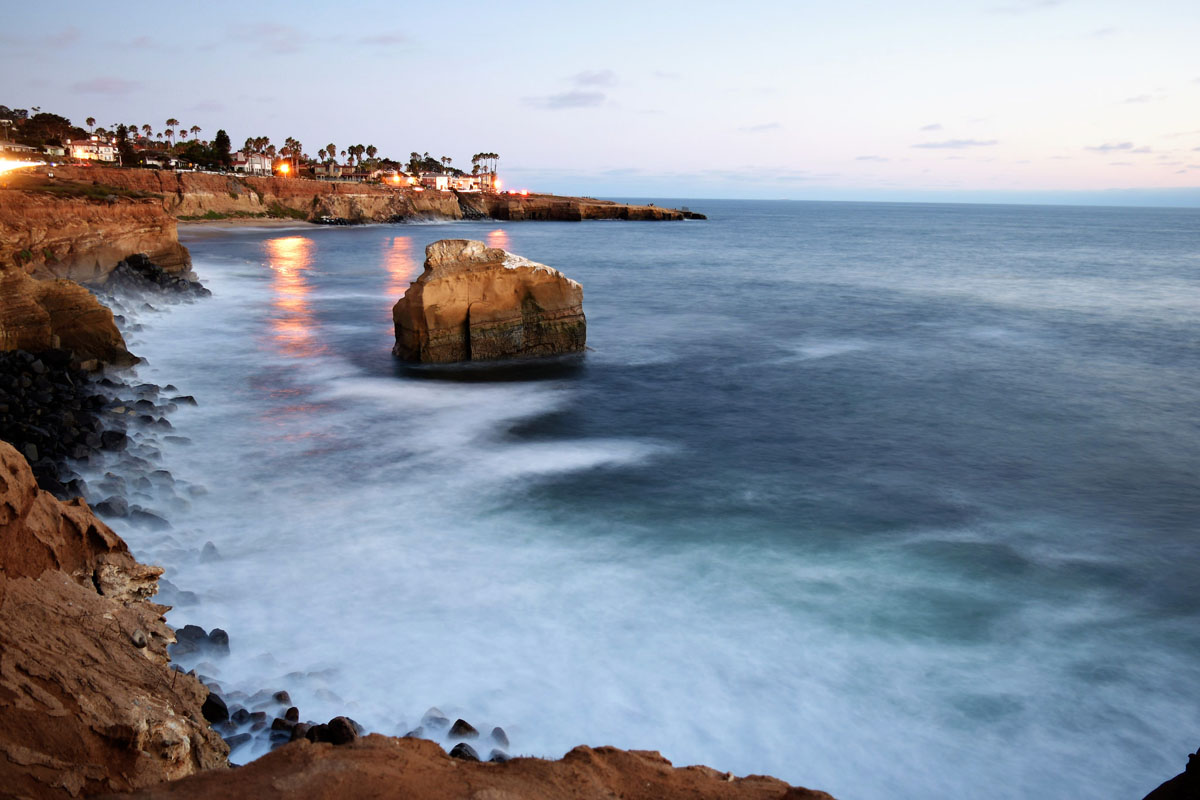
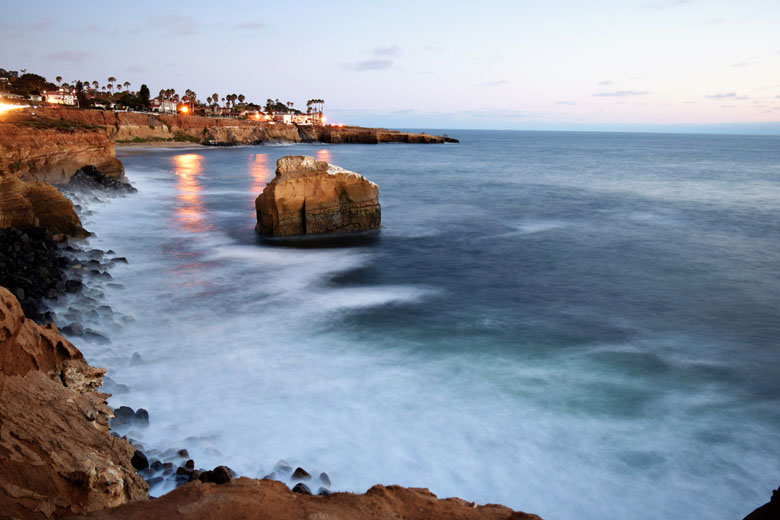
Nikon 18-55mm f/3.5-5.6 (Kevin Raquidan)
The D3300 is one of Nikon's leading entry-level DSLRs and a great value at around $450 with an 18-55mm kit lens. With this camera you get a 24.2-megapixel image sensor, Nikon’s EXPEED 4 image processor, and a host of features like Wi-Fi connectivity and in-camera distortion correction. The 18-55mm kit lens is a good start, but below we break down the best prime and zoom lens options that will help take your photography with the D3300 to the next level, including wide angle, portrait, telephoto, and all-in-one. For more information, see our lens comparison table and buying advice below the picks.
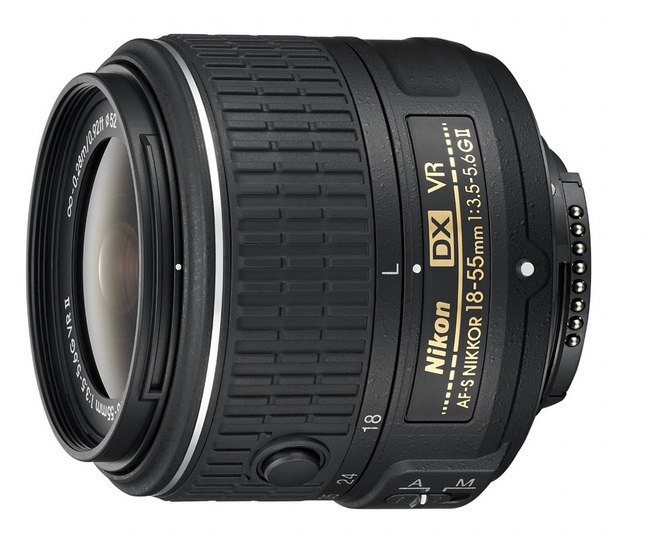 Category: Kit
Category: Kit
35mm equivalent: 27-82.5mm
Weight: 6.9 oz.
What we like: Lighter than the previous version.
What we don't: Plastic build and limited reach.
There isn’t much to debate here: the Nikon 18-55mm VR II is included with the D3300 and you won’t find the camera body on its own (new at least). The good news is that this kit lens is fairly decent and improved from its predecessors, with better sharpness and a lower weight at 6.9 ounces. You can expect some distortion at the wide end, which can be corrected in-camera with the automatic distortion correction on the D3300. And the 18-55mm VR II isn’t great in low light with a maximum aperture of f/3.5-5.6, but kit lenses seldom are. It is, however, a solid starting point and can serve as a handy backup should you decide to add some of the prime or zoom lenses below.
See the Nikon 18-55mm Kit
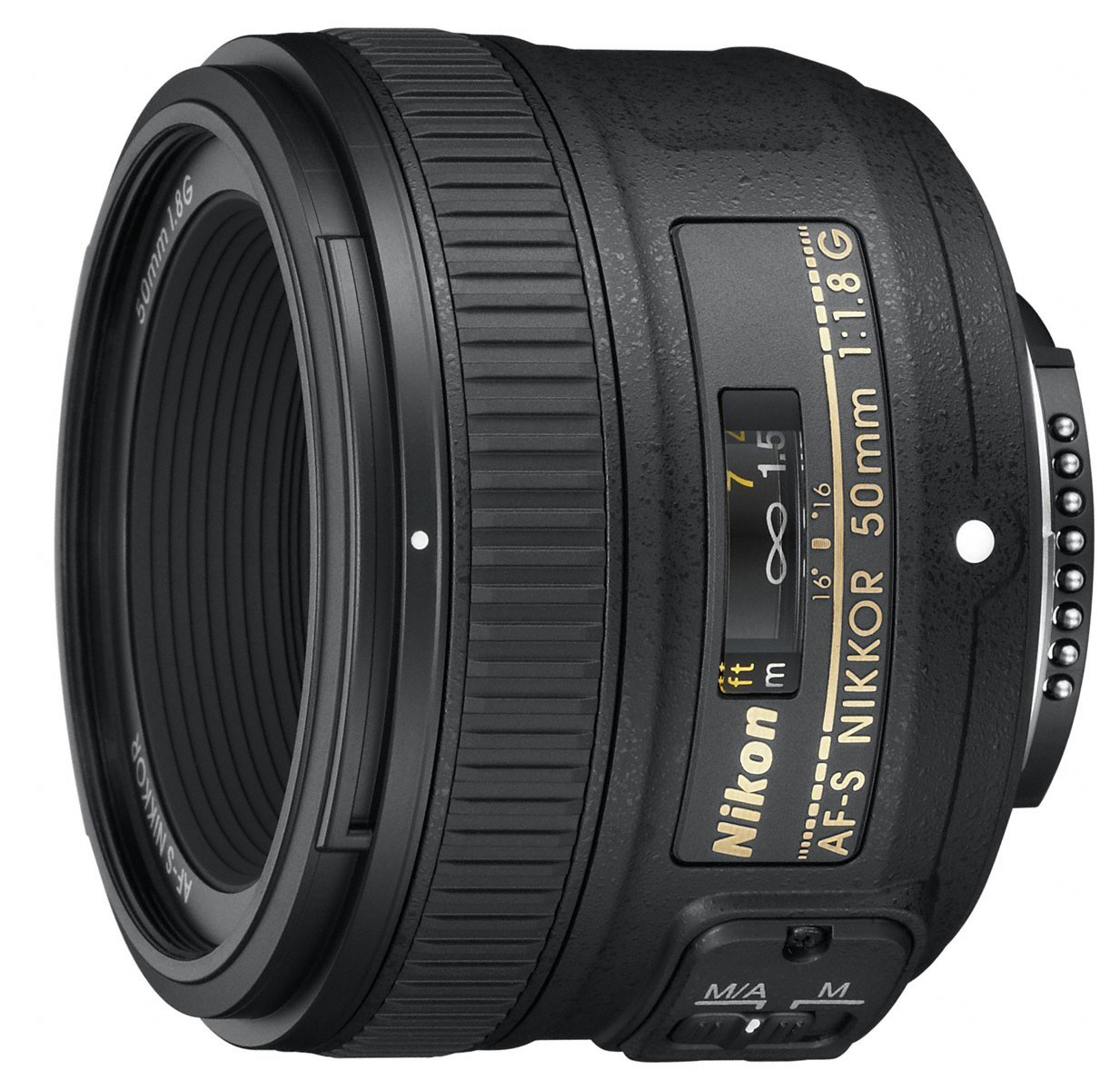 Category: Portrait
Category: Portrait
35mm equivalent: 75mm
Weight: 6.6 oz.
What we like: Sharp and light.
What we don't: Not much.
For those who shoot portraits or indoor photography, the 50mm f/1.8 is a must-have lens. It's one of the sharpest in Nikon’s lineup, performs well in low light at f/1.8, has fast and accurate autofocus, and produces good bokeh. Compared to the 18-55mm kit lens above, the 50mm f/1.8 will make your photos looks more professional and crisp at a reasonable price point. We also like the easy focus override, which allows you to switch from auto to manual simply by moving the focus ring. Keep in mind that this technically is an FX lens but is fully compatible with the D3300 and equivalent to 75mm. And we like the crossover appeal should you ever decide to upgrade to a full-frame camera.
See the Nikon 50mm f/1.8
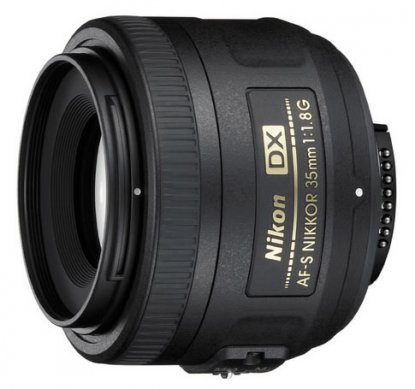 Category: Travel/portrait
Category: Travel/portrait
35mm equivalent: 52.5mm
Weight: 7.1 oz.
What we like: Excellent optics for a low price.
What we don't: Plastic build.
If you plan on shooting travel or street photography with the D3300, we highly recommend picking up the Nikon 35mm f/1.8. With a focal length equivalent of 52.5mm, this is one of the top lenses in the DX lineup—it’s sharp, performs well in low light, and is relatively inexpensive for what you get. The only real weakness of the 35mm f/1.8 is that aside from a metal mount, the lens has a plastic build that may not last forever. But this isn’t a huge risk considering the price, especially for a fantastic lens overall. If deciding between the 35mm f/1.8 and the 50mm f/1.8 above, both are similar in terms of image quality so the choice mostly comes down to focal length. The 35mm f/1.8 is better for travel and as a walk-around lens, while the 50mm f/1.8 is ideal for people photos.
See the Nikon 35mm f/1.8
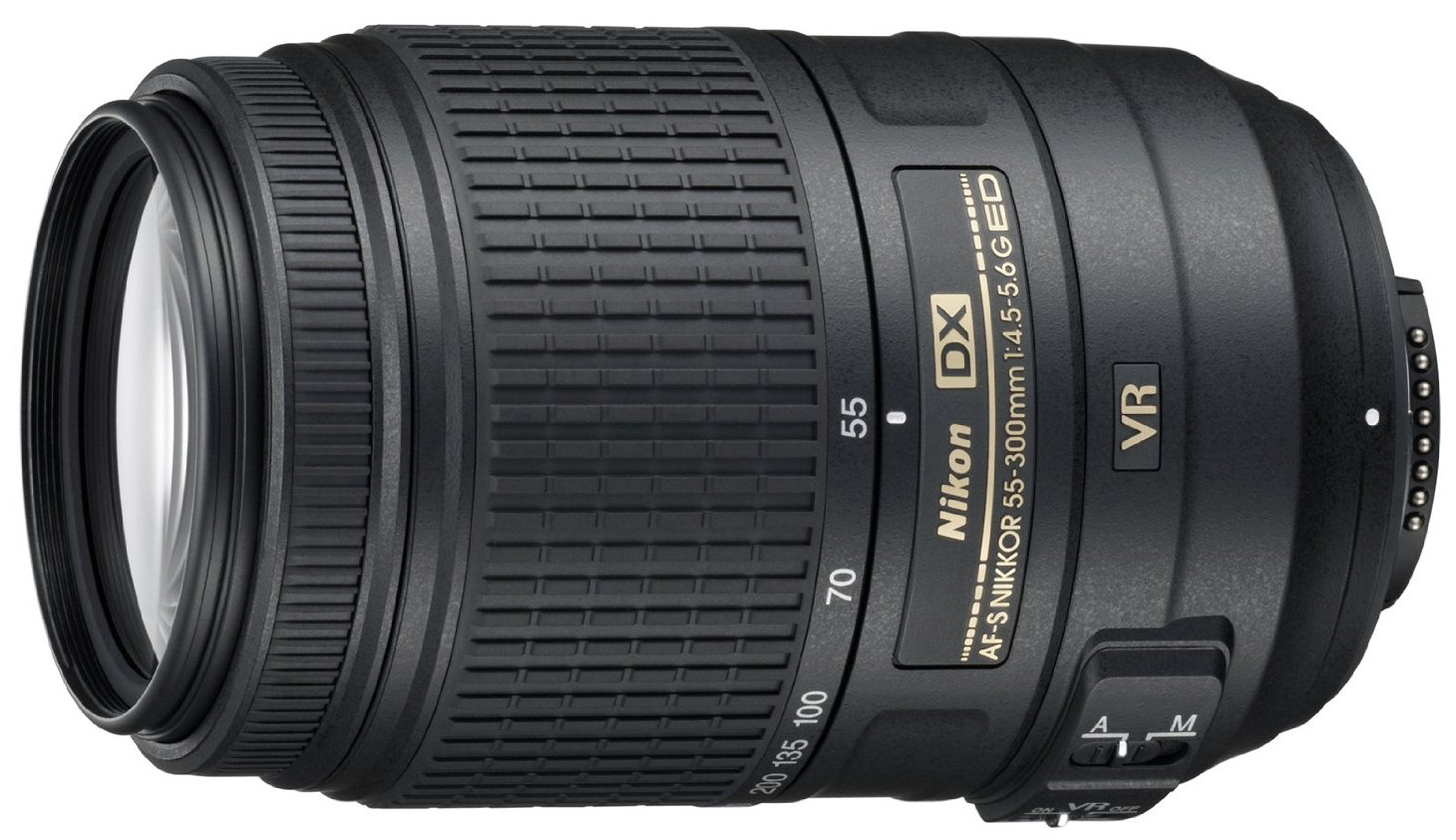 Category: Telephoto
Category: Telephoto
35mm equivalent: 82.5-450mm
Weight: 18.7 oz.
What we like: Long reach.
What we don't: Autofocus has a tendency to hunt.
To compliment the 18-55mm kit lens and give you complete coverage from wide angle to telephoto, we like the Nikon 55-300mm. Along with the 18-300mm, this lens is tied for the longest zoom of any DX-format lens, taking you to an impressive 450mm equivalent. If you plan on shooting a significant amount of wildlife photography, the extra 100mm over the 55-200mm f/4-5.6 below certainly will be appreciated. However, this lens is more expensive and heavier, both of which are important considerations. And although it comes with vibration reduction to help with camera shake, you will want to do the majority of your shooting in normal lighting conditions.
See the Nikon 55-200mm f/4.5-5.6 VR
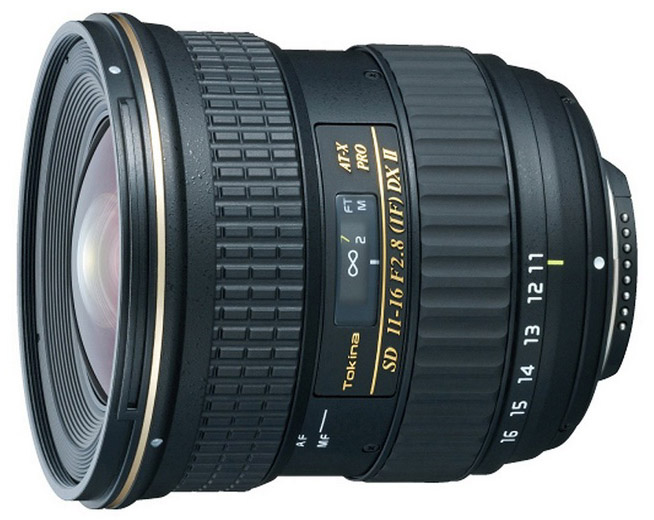 Category: Wide angle
Category: Wide angle
35mm equivalent: 16.5-24mm
Weight: 19.8 oz.
What we like: A fast and reasonably priced wide-angle zoom.
What we don’t: Autofocus is mediocre.
Given that Nikon’s 10-24mm f/3.5-4.5 below is way too expensive for most people who buy the entry-level D3300, we’re always on the lookout for cheaper wide-angle alternatives. For a while we had the Sigma 10-20mm f/4-5.6 on this list, but have replaced it with the Tokina 11-16mm. Most importantly, we love the fast f/2.8 maximum aperture, which gives you pro-level low light performance for under $500. Keep in mind that this lens is far from perfect: the autofocus is slower and less accurate than Nikon’s native offerings, and distortion is noticeable, particularly at the wide end. However, the Tokina 11-16mm f/2.8 is a fun tool for aspiring landscape photographers.
See the Tokina 11-16mm f/2.8 DX II
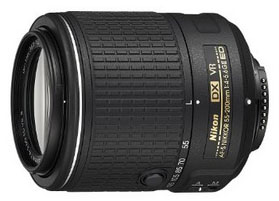 Category: Telephoto
Category: Telephoto
35mm equivalent: 82.5-300mm
Weight: 10.6 oz.
What we like: Light and compact for a telephoto zoom.
What we don't: Plastic mount and construction.
If you only plan on shooting at the telephoto end of the spectrum on occasion but still want the option in your camera bag, the Nikon 55-200mm f/4-5.6 is about $250 cheaper than the 55-300mm above and quite a bit lighter. Of course, the sacrifice comes with 100mm less of zoom, which can make a big difference when shooting far-off objects like wildlife that you just can’t approach. This lens does come with Vibration Reduction, has decent autofocus, and good optics for the price. It’s not a telephoto lens for professionals, but it’s a nice option for those who want to complete their D3300 setup on budget.
See the Nikon 55-200mm f/4-5.6G VR II
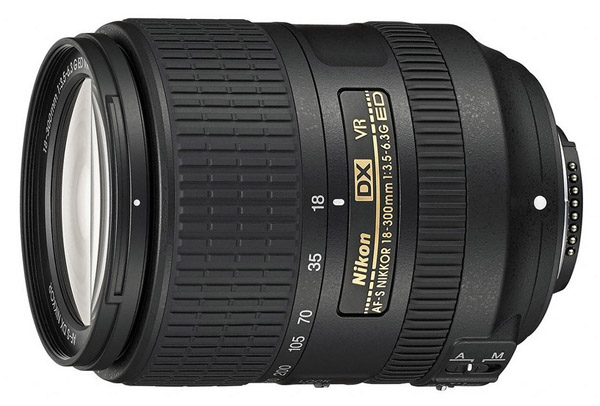 Category: All-in-one
Category: All-in-one
35mm equivalent: 27-450mm
Weight: 19.4 oz.
What we like: Tremendous versatility.
What we don't: Pricey and doubles up on some focal length coverage with the kit lens.
The Nikon 18-300mm VR is the ticket for an all-in-one lens that can capture everything from wide-angle shots to wildlife. With a zoom range equivalent to a whopping 27-450mm on a 35mm camera, you’d expect a heavier and bulkier lens. Yet the 18-300mm VR weighs only 19.4 ounces and is surprisingly compact. In addition, the lens produces sharp images, particularly in the heart of its zoom range, and has vibration reduction for when natural light is low. The biggest hurdle with this lens is the price, which is nearly double the cost of the camera.
See the Nikon 18-300mm f/3.5-5.6 VR
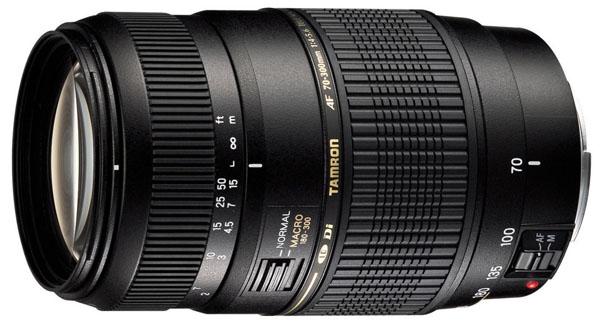 Category: Telephoto
Category: Telephoto
35mm equivalent: 105-450mm
Weight: 15.4 oz.
What we like: Cheap with a lot of reach.
What we don’t: No vibration reduction.
If you want big-time zoom but the two-lens kit with the Nikon 55-300mm is too pricey, the Tamron 70-300mm f/4-5.6 is an intriguing option. This lens doesn’t have vibration reduction and therefore you should plan on doing most of your shooting in good light, but it does get you all the way to 450mm equivalent without breaking the bank. Keep in mind that by combining this Tamron zoom with the 18-55mm VR II kit lens (included with the camera) you will have a small gap in focal length coverage from 55mm to 70mm, but that shouldn’t be a big deal unless you frequently shoot portraits. Even then, you can probably work around it.
See the Tamron 70-300mm f/4-5.6
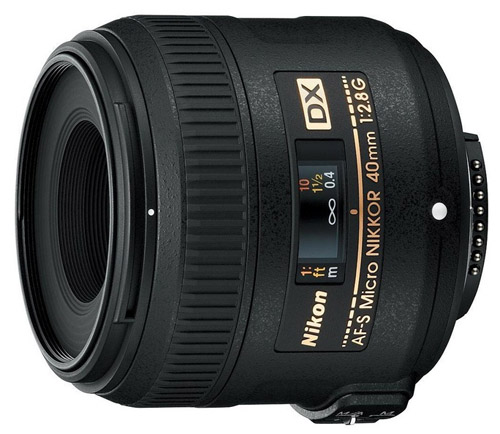 Category: Macro
Category: Macro
35mm equivalent: 60mm
Weight: 9.9 oz.
What we like: Sharp and inexpensive.
What we don't: 40mm focal length requires getting close to your subject.
Two of the most popular macro options for the D3300 are the 40mm f/2.8 and 85mm f/3.5. Based on price, we like the 40mm version best—the 85mm is over $500, which is more than the cost of the camera. The shorter focal length is best for non-moving subjects that can be easily approached (think flowers, food, or product photography). In terms of optics, we really like this lens—it’s sharp, inexpensive, and can focus close to your subject. It's also faster than the Nikon 85mm by two-thirds of a stop. The downside is that 40mm may be too short for some types of macro photography, but you can always add more lenses down the road. For a fun macro option with more reach, try the Tokina 100mm f/2.8.
See the Nikon 40mm f/2.8
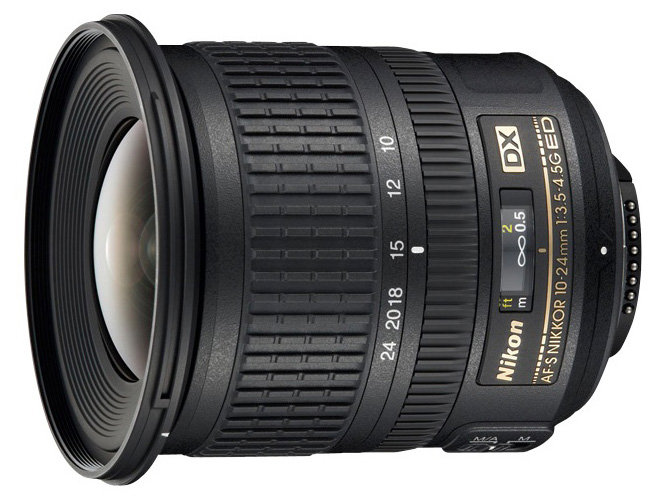
Category: Wide angle
35mm equivalent: 15-36mm
Weight: 16.2 oz.
What we like: The best wide-angle zoom for DX in terms of image quality.
What we don't: Too pricey for our tastes.
At around $900, the Nikon 10-24mm f/3.5-4.5 is a stretch for most people who buy the D3300. However, the choices are limited in this category and it made this list because it’s far and away the best wide-angle lens for DX in terms of image quality. We love the focal length range, which is equivalent to 15mm (ultra-wide) to 36mm (normal field of view) on a 35mm camera, offering great versatility. As is the case with almost all wide-angle zooms, the low light performance is limited and you can expect some distortion at the wide end, but you just won’t find better optics.
See the Nikon 10-24mm f/3.5-4.5
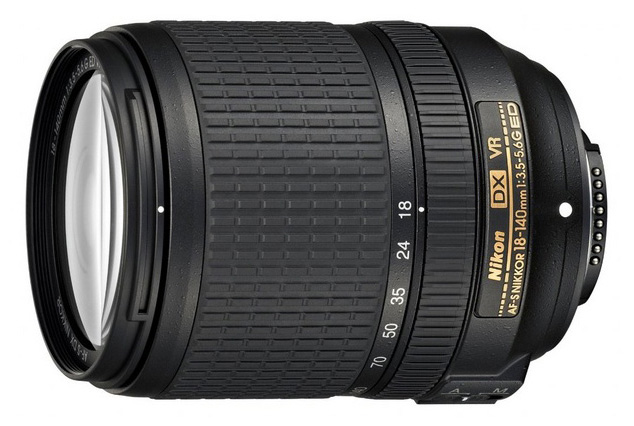 Category: Travel zoom
Category: Travel zoom
35mm equivalent: 27-210mm
Weight: 17.3 oz.
What we like: Versatile and sharp.
What we don't: Plastic build.
For a noticeable improvement in image quality over the 18-55mm kit lens and a much longer range, try the Nikon 18-140mm VR. This relatively new lens to Nikon’s DX lineup is sharp, has vibration reduction, and is compact at less than 4 inches in length. For travel and most other uses that don’t require serious telephoto capability, the 18-140mm can be your one and only lens for the Nikon D3300. Why isn’t it ranked higher? Because you get the 18-55mm kit lens with the camera, the 18-140mm is doubling up on a lot of focal length coverage. And given the low cost of the D3300, this lens may be too expensive of a purchase for what it is. We wish this lens was offered in a kit with the D3300, but perhaps that will happen down the road.
See the Nikon 18-140mm f/3.5-5.6 VR
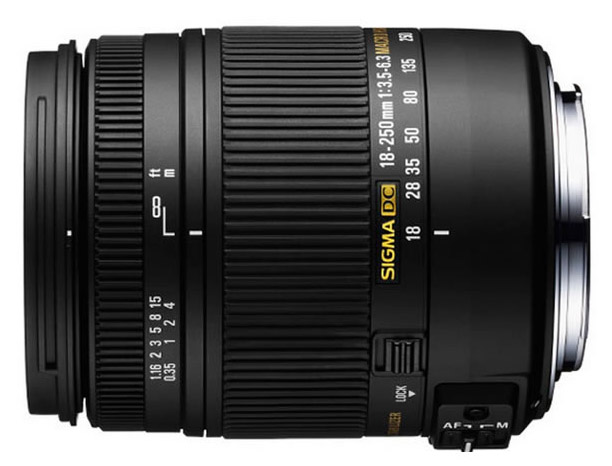 Category: All-in-one
Category: All-in-one
35mm equivalent: 27-375mm
Weight: 16.6 oz.
What we like: The cheapest all-in-one lens for the D3300.
What we don't: Make sure to use the lens lock as it has a tendency to creep.
For an all-in-one lens on a budget, check out the Sigma 18-250mm Macro OS. The biggest selling point is price, which is hundreds of dollars less than either of the Nikon lenses above. Why is it so much less expensive? First, there is a drop off in aperture at f/6.3 vs. f/5.6 on the two lenses above. Second, the composite material used in the lens barrel isn’t as durable as a harder plastic or metal. Third, the optical performance of the Sigma isn’t as good as the Nikon lenses with more softness in the corners. But the Sigma 18-250mm is a great value at around $350, and as a bonus, it’s a few ounces lighter than either Nikon lens.
See the Sigma 18-250mm f/3.5-6.3 OSS
| Lens | Price | Category | 35mm | Aperture | Weight | VR | Filter |
|---|---|---|---|---|---|---|---|
| Nikon 18-55mm f/3.5-5.6 VR II | $447 | Kit | 27-82.5mm | f/3.5-5.6 | 6.9 oz. | Yes | 52mm |
| Nikon 50mm f/1.8 | $217 | Potrait | 75mm | f/1.8 | 6.6 oz. | No | 58mm |
| Nikon 35mm f/1.8 | $217 | Travel/portrait | 52.5mm | f/1.8 | 7.1 oz. | No | 52mm |
| Nikon 55-300mm f/4.5-5.6 VR | $397 | Telephoto | 82.5-450mm | f/4.5-5.6 | 18.7 oz. | Yes | 58mm |
| Tokina 11-16mm f2/.8 DX II | $469 | Wide angle | 16.5-24mm | f/2.8 | 19.8 oz. | No | 77mm |
| Nikon 55-200mm f/4-5.6 VR II | $147 | Telephoto | 82.5-375mm | f/4-5.6 | 10.6 oz. | Yes | 52mm |
| Nikon 18-300mm f/3.5-6.3 VR | $697 | All-in-one | 27-450mm | f/3.5-6.3 | 19.4 oz. | Yes | 52mm |
| Tamron 70-300mm f/4-5.6 | $147 | Telephoto | 105-450mm | f/4-5.6 | 15.4 oz. | No | 62mm |
| Nikon 40mm f/2.8 Micro | $247 | Macro | 60mm | f/2.8 | 9.9 oz. | No | 52mm |
| Nikon 10-24mm f/3.5-4.5 | $897 | Wide angle | 15-36mm | f/3.5-4.5 | 16.2 oz. | No | 77mm |
| Nikon 18-140mm f/3.5-5.6 VR | $479 | Travel zoom | 27-210mm | f/3.5-5.6 | 17.3 oz. | Yes | 67mm |
| Sigma 18-250mm f/3.5-6.3 OSS | $349 | All-in-one | 27-375mm | f/3.5-6.3 | 16.6 oz. | Yes | 62mm |
We’ve established that the D3300 is sold with the 18-55mm VR II kit lens, so the decision comes down to how to finish out your camera bag. For a big step up in image quality at a reasonable price, we like the 50mm f/1.8, which is a fast prime that will make your people and indoor photos really pop. The 35mm f/1.8 is another good option and very similar in terms of optical quality, but the focal length of that lens is better for travel and street photography. You can’t go wrong with either, and both will give much more professional-looking images than the kit lens.
Many people buying the D3300 consider adding a telephoto lens to cover the full spectrum of focal lengths. Conveniently, these lenses usually start at 55mm and are relatively inexpensive for what you get. We like the Nikon 55-300mm f/4.5-5.6 best, which offers the extra coverage you’ll want and likely need for serious telephoto images and wildlife in particular. With a fast prime and telephoto, the images you capture with the D3300 will look a lot better than if you stick solely with the kit lens.
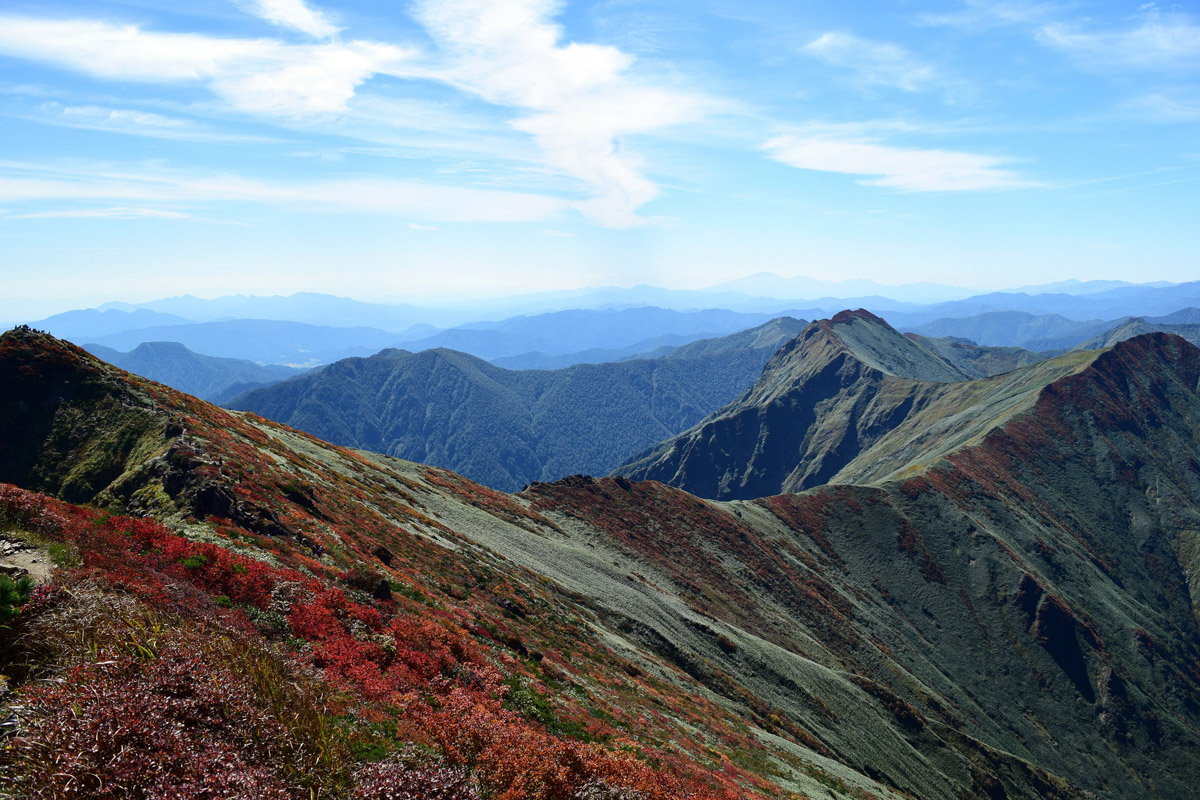
The zoom vs. prime debate is ongoing in the photography world, and the answer depends on your photography style and budget. Zooms cover a range of focal lengths and therefore are the most versatile lenses on the market. Primes have fixed focal lengths but generally are better in low light, sharper, and have less distortion. It’s worth noting that Nikon continues to improve its zoom offerings and these lenses are better than even a handful of years ago. And all new Nikon DSLRs including the D3300 have a built-in distortion correction mode.
For an entry-level DSLR like the D3300, we prefer zoom lenses. You just get more bang for your buck in terms of focal length coverage. The D3300 comes with one zoom lens—the 18-55mm VR II—further pushing you in that direction. We often recommend spending up for lenses, and particularly for enthusiast and full-frame cameras, but the D3300 is about getting out and learning photography. Accordingly, we recommend starting with zooms and you can always add primes down the road.
Nikon DX cameras like the D3300 have a 1.5x crop factor, meaning that a 50mm lens will behave like a 75mm lens would on a 35mm camera. The history behind crop factor is long, but what you need to know is that the focal lengths of a lens are described using 35mm film as the reference point. Because the image sensor on Nikon DX cameras is 1.5 times smaller than a 35mm camera, you multiply the listed focal length of the lens by 1.5 to determine its equivalent.
If you’ve used a full-frame camera or are familiar with those focal lengths, crop factor can be very helpful in choosing your lenses. For example, the Nikon 55-200mm lens actually is equivalent to 82-300mm on the D3300, longer than the listed range. Make sure to keep this conversion in mind when making your lens decisions.
After a lens’s focal length you’ll see an f-number, or f-stop, which represents the aperture. Aperture is the size of the opening through which light passes, and the lower the f-stop (f/3.5, f/2.8, etc.), the larger the opening and the more light can enter. You can see the full f-stop scale here, but keep in mind that lower numbers are better in low light and therefore are more desirable lenses. If there are two numbers—f/3.5-5.6, for example—the first number is the maximum aperture at the wide end and the second is at the long end for a zoom lens.
Many standard Nikon zoom lenses are f/3.5-5.6, which is respectable but not great in low light. Vibration Reduction certainly helps and f/3.5 will perform fine in most normal lighting conditions and even some challenging ones. Lenses that are f/2.8 and faster are nearing professional territory and can help you achieve the low light photos and creamy bokeh (blurry background) that experienced photographers covet. For beginners, aperture is something to think about but not necessarily worry about just yet.
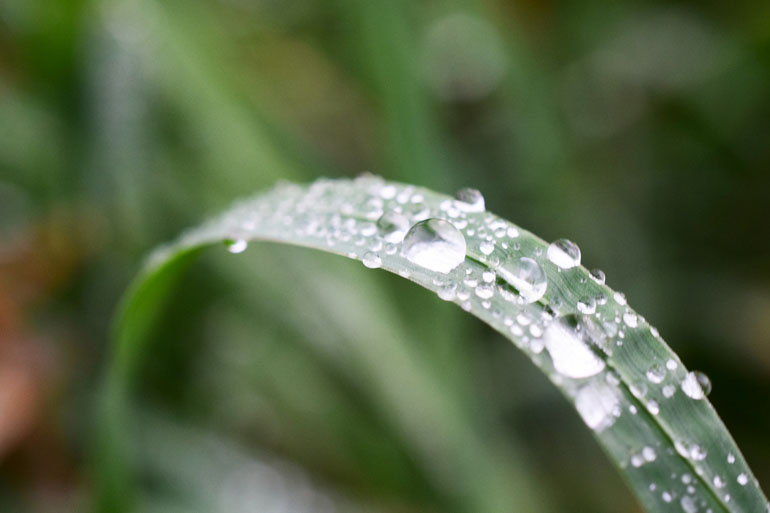
When piecing together your D3300 kit and investing in lenses, it’s smart to start thinking about what would happen if you were to upgrade cameras down the road. All DX lenses that you buy for the D3300 are compatible on all Nikon DX (crop-sensor) cameras. For example, if you later decide to step up to the enthusiast Nikon D7200, you can bring all of your lenses with you.
In terms of compatibility, most of Nikon’s FX (full-frame) lenses are compatible on DX cameras like the D3300. But simply put, they are typically way too expensive and heavy for the camera. In addition, the area of the lens that extends beyond the crop-frame sensor automatically will be cut out of the photo, and therefore you won’t be utilizing its full capability. If you already own FX lenses, feel free to try them on your D3300, but in most cases we heartily recommend against buying them specifically for this purpose.